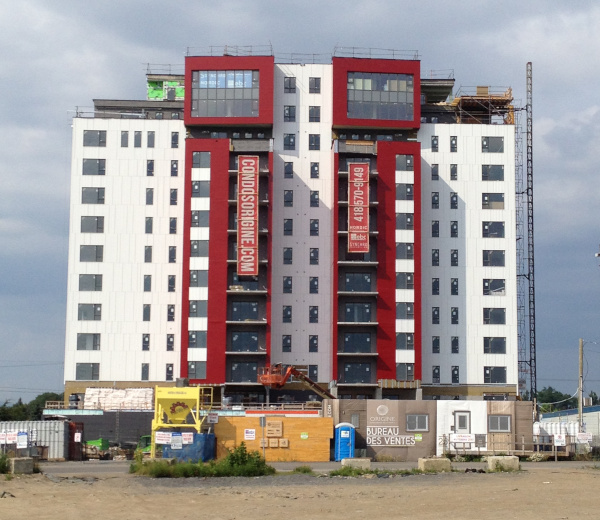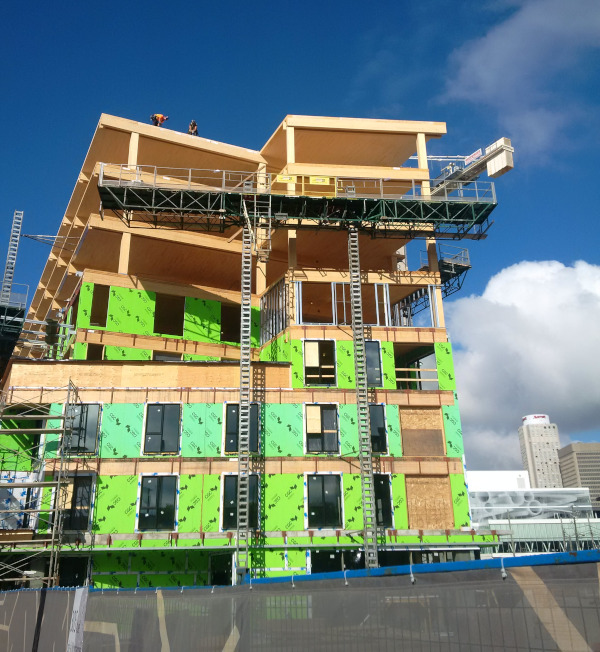FPInnovations
The future is wood
Business View Magazine interviews representatives of FPInnovations for our focus on the Canadian Wood Products Industry
FPInnovations is a private not-for-profit corporation that specializes in the creation of solutions in support of the Canadian forest sector’s global competitiveness. A renowned service provider, FPInnovations operates in all spheres of the forest industry in North America. It is ideally positioned to perform state-of-the-art research, develop advanced technologies, and deliver innovative solutions to complex problems for every area of the sector’s value chain, from forest operations to consumer and industrial products. FPInnovations’ R&D laboratories are located in Montréal, Quebec City, and Vancouver, with technology transfer offices across Canada.

FPInnovations fuels the growth and prosperity of the forest sector by nurturing creative people and scientific excellence within a diverse workplace and enabling partnerships among industry, government and academia. The organization’s vision is both simple and powerful – a world where products from sustainable forests contribute to every aspect of daily life. Building on a century of research, FPInnovations offers proven solutions and technologies that can be quickly implemented by any organization.
Business View Magazine spoke with FPInnovations representatives: Erol Karacabeyli, Principal Scientist; Joane St-Onge, Senior Director of Sustainable Construction; and Terry Knee, CCO about the organization’s notable achievements, and insights into the Canadian wood products industry. The following is an edited transcript of the conversation.
BVM: Can you give us a brief overview of the organization?
Knee: “FPInnovations was born out of three research institutes, each of which operated in Canada for a very long time – The Pulp & Paper Institute of Canada (Paprican) started back in the 1925; the Forest Engineering Research Institute of Canada (FEROC) started in 1975; and Forintek Canada Corporation was originally founded as a government agency in 1918 and later privatized. In 2007, those three entities merged together with the support of industry and government to create one of the few research institutes, world-wide, that treated everything from the forest right through to the value added end products – whether that’s lumber, paper, engineered wood, or bio products and a lot of exciting things that we’re coming out with that go way beyond anything we would have thought of 20 years ago.
“The mission hasn’t changed that much in the sense that the three institutes that are now FPInnovations are there to do applied research to support the sector. That means transformation of the sector and helping develop new markets. It’s about putting the science on the table to show that wood is as equally viable as other solutions that are out there. Our members and affiliates represent industries from all sectors on the forest side – everything from companies and contractors doing harvesting in the forest, right to the large pulp and paper mills and sawmills and engineered wood products manufacturers.”
Karacabeyli: “We have good ties with our sister organization in the U.S., which is the Department of Agriculture Forest Products Laboratory. Although, we are a partnership between industry and provincial and federal governments, whereas they are a government laboratory.”
BVM: What are some of the biggest challenges facing the wood products industry and what are the most prevalent fields of research you’re undertaking to find solutions?
St-Onge: “Every year we meet with members to define what their challenges are, based on our last discussion, because this is evolving year over year. One of the biggest challenges is how can we have the market accept everything that is wood products. We’re talking also about performance, quality, and durability of wood based systems. From the wood products side of our business, we are looking at speed and cost of construction, commissioning, and operation. And also how can we harmonize the full value chain to allow connections between the forest products manufacturing and construction. Those are challenges for the whole industry. We are also looking at the speed of developing and deploying standardized solutions to take full advantage of the new building code provisions for wood. Everything is going so fast, so we need to push forward with what we are suggesting in terms of solutions, so wood can adapt to the market.”

BVM: Can you describe the types of wood building systems?
Karacabeyli: “In a nutshell, we have two types of systems. One is light wood frame for construction, done with dimensioned lumber. And the other one is heavy timber, which is now being rebranded as mass timber.
“The light wood frame construction (also called 2 x 4 construction) started in the beginning of the 19th century and came all the way to the 21st century. The system has evolved but never lost its momentum. It always dominated single-family housing in North America, and then it dominated one to four story multi-family buildings, and since 2009 it is dominating five and six story multi-family buildings in Canada.
“The heavy timber construction started at the end of the 19th century, and in the beginning of the 20th century heavy timber buildings with brick facades were the norm for mid-rise buildings. We have heritage buildings up to nine stories in Canada that are still serving their customers. One in Vancouver is 115 years old. By the mid-20th century, steel and reinforced concrete came along and pushed the heavy timber buildings off the market. Now at the beginning of the 21st century, mass timber is making a comeback. And governments are backing it because it is a very sustainable system. Recently, we’ve started seeing some mass timber products like CLT in the light frame buildings, as the core for elevator shafts or stairwells, or as a floor. So, there’s an interesting evolution happening.”
BVM: How is FPInnovations helping to advance the evolution?
St-Onge: “We are pushing to include wood in the market for all those kind of buildings. And from our members’ point of view, the next step would be to industrialize all that construction. We are looking for a solution to achieve this and reviewing the codes that need to be adapted – from the forest to the last step of those buildings. Based on the codes and standards, everything that is brought to the table needs to be addressed and accepted. So whenever you suggest modifying a specific code, it must be approved by all committee members. That’s a big part of what we are doing within our team – the research required to ensure safe construction with wood and then approval by the industry and the regulators.”
Karacabeyli: “We work closely with collaborators, such as the Canadian Wood Council (CWC), American Wood Council (AWC), APA, universities, and we played a major role in moving light frame from four stories permitted in the codes to the current six stories. This happened first in British Columbia in 2009 and now it’s in Canada’s national building codes. Today, we have over 500, six-story buildings in Canada – either built or in the design or construction stage.
“On the mass timber side, we played a significant role with our partners in implementing the game-changing CLT technology in North America. There is now a CLT product standard for Canada and the U.S., which was then implemented in the wood design standard. We also played a major role in implementing tall wood buildings. In 2021, the Canadian national building code is going to allow mass timber buildings up to 12 stories.
“We participate in codes and standards committees and provide information to support proposals by CWC in Canada, or AWC in the U.S. We are the experts preparing the technical information. But we do one more thing which is very important. We package and disseminate the collaborative research we perform via handbooks and guides for wood building systems and products. They are the repository for all the information behind these codes and changes.”
BVM: What will the future landscape look like for the industry?
Karacabeyli: “If I put a crystal ball in front of me, I see more 12-story mass timber buildings in Canada as it will soon be recognized in the national building code. Some of our members who are producing mass timber products like CLT will be producing more and there will be newcomers in the market. And in 2021, the U.S. codes are expected to accept 18-story construction using mass timber. So a lot of exciting developments are happening.”
St-Onge: “There is also a part we’re doing, where the industry demonstrates a huge appetite for new products made from wood. We are looking at developing new sustainable materials for construction, such as panels with new characteristics which is something we are developing, as sustainability and the carbon footprint is more and more of a concern.”
Knee: “I think the future landscape is one of exciting transformation. The industry is changing rapidly – it is sometimes considered a sunset industry but we actually see it as quite the opposite.”
AT A GLANCE
FPInnovations
What: Not for profit research organization supporting the Canadian forest sector
Where: Head office in Pointe Claire, Quebec
Website: web.fpinnovations.ca

